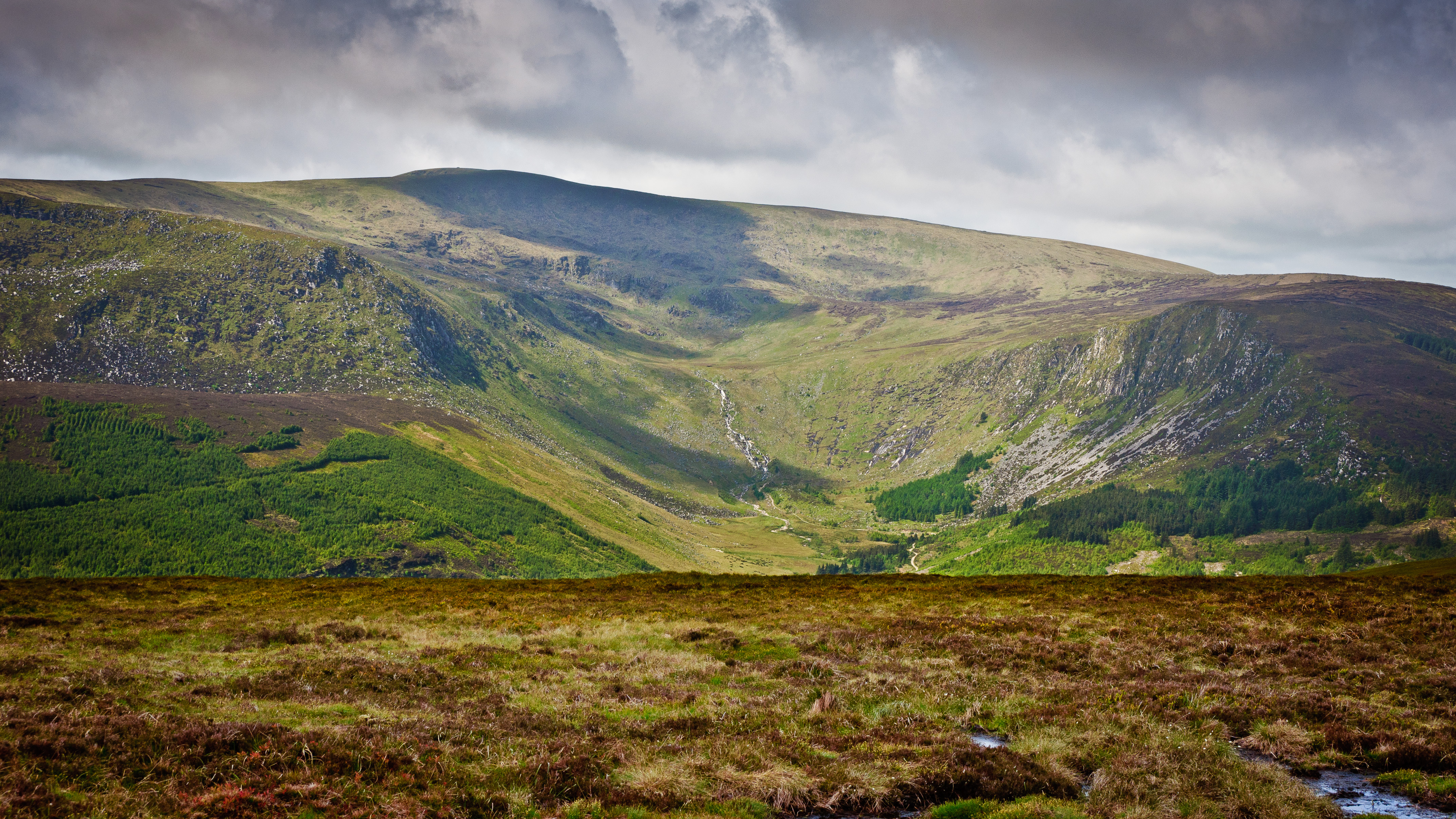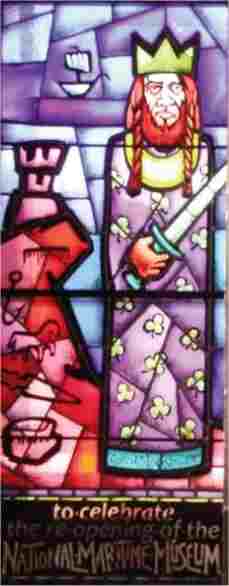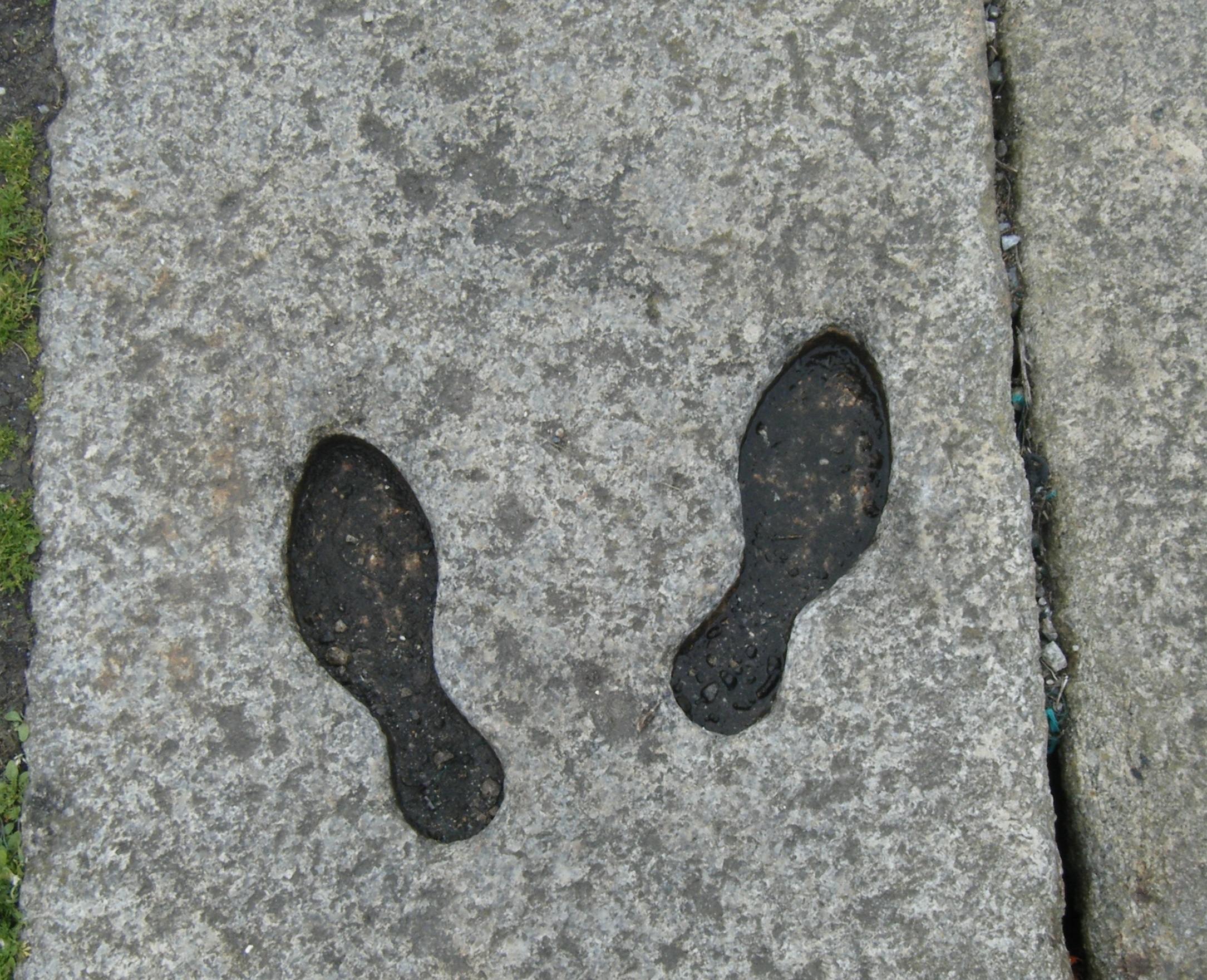|
Three Rock Mountain
Three Rock Mountain (; archaism, archaic: ''Sliabh Ruadh'') is a mountain in County Dublin, Ireland. It is high and forms part of the group of hills in the Dublin Mountains which comprises Two Rock, Three Rock, Kilmashogue and Tibradden Mountain, Tibradden mountains. The mountain takes its name from the three groups of granite rocks at the summit.Joyce, p. 131. It was once believed that these features were man-made: for instance, Gabriel Beranger wrote of them in 1780, "I take them to be altars upon which sacrifices were offered […] the regularity which is observed in piling them convinces me they are the work of man, as they could not grow in that position".Joyce, p. 132. In fact, the three outcrops are Tor (rock formation), tors: natural geological features produced by the gradual process of weathering. Today, the summit is dominated by the many radio masts and towers that use the site to broadcast their signals across the Dublin area below. The forestry plantations on ... [...More Info...] [...Related Items...] OR: [Wikipedia] [Google] [Baidu] |
Dublin Mountains
The Wicklow Mountains (, archaic: '' Cualu'') form the largest continuous upland area in Ireland. They occupy the whole centre of County Wicklow and stretch outside its borders into the counties of Dublin, Wexford and Carlow. Where the mountains extend into County Dublin, they are known locally as the Dublin Mountains (''Sléibhte Bhaile Átha Cliath''). The highest peak is Lugnaquilla at . The mountains are primarily composed of granite surrounded by an envelope of mica-schist and much older rocks such as quartzite. They were pushed up during the Caledonian orogeny at the start of the Devonian period and form part of the Leinster Chain, the largest continuous area of granite in Ireland and Britain. The mountains owe much of their present topography to the effects of the last ice age, which deepened the glens and created corrie and ribbon lakes. Copper and lead have been the main metals mined in the mountains and a brief gold rush occurred in the 18th century. Several major r ... [...More Info...] [...Related Items...] OR: [Wikipedia] [Google] [Baidu] |
Sitka Spruce
''Picea sitchensis'', the Sitka spruce, is a large, coniferous, evergreen tree growing to just over tall, with a trunk diameter at breast height that can exceed 5 m (16 ft). It is by far the largest species of spruce and the fifth-largest conifer in the world (behind giant sequoia, coast redwood, kauri, and western red cedar), and the third-tallest conifer species (after coast redwood and South Tibetan cypress). The Sitka spruce is one of only five species documented to exceed in height. Its name is derived from the community of Sitka in southeast Alaska, where it is prevalent. Its range hugs the western coast of Canada and the US and continues south into northern California. Description The bark is thin and scaly, flaking off in small, circular plates across. The inner bark is reddish-brown. The crown is broad conic in young trees, becoming cylindric in older trees; old trees may not have branches lower than . The shoots are very pale buff-brown, almost w ... [...More Info...] [...Related Items...] OR: [Wikipedia] [Google] [Baidu] |
Carrickgollogan
Carrickgollogan () is a hill in Dún Laoghaire–Rathdown in Republic of Ireland, Ireland, towards the southern border of the traditional County Dublin. It is high, on the eastern edge of the Dublin Mountains, rising above the districts of Rathmichael and Shankill, Dublin, Shankill. Its summit is noted for the panoramic views it offers of south Dublin and north County Wicklow, Wicklow. Geography and geology The geological composition of the summit is predominantly quartzite.Environmental Protection Agency, p. 2. The high ground is a mixture of heath (habitat), heathland and commercial forestry while the lower slopes are mainly farmland. The forest on the mountain is mixed woodland including Lodgepole pine, Noble fir, Japanese larch, Lawson cypress, Scots pine, birch and beech trees and is a habitat for badgers, rabbits and a variety of birds. The area around the summit includes a number of sites of historical interest including the former Ballycorus Leadmines, lead works at Ba ... [...More Info...] [...Related Items...] OR: [Wikipedia] [Google] [Baidu] |
Killiney
Killiney () is an affluent coastal suburb on the southside of Dublin, Ireland. It lies south of Dalkey, east and northeast of Ballybrack and Sallynoggin and north of Shankill, in the local government area of Dún Laoghaire–Rathdown within County Dublin. The place grew around the 11th century Killiney Church, and became a popular seaside resort in the 19th century. The area is notable for some famous residents, including two members of U2, and Enya. Killiney is in a civil parish of the same name, in the barony of Rathdown. Amenities The tiny village centre of Killiney contains a pub, the Druid's Chair. To the north is a hotel, Fitzpatrick's Castle Hotel since 1971, and beyond that a small shopping centre established in the 1970s, and nearer Ballybrack some further retail facilities. Between the hotel and the café are two churches, one Church of Ireland, and one a secondary Catholic church or chapel, open briefly weekly. A Le Chéile Schools Trust school, Holy Child Kill ... [...More Info...] [...Related Items...] OR: [Wikipedia] [Google] [Baidu] |
Dalkey
Dalkey ( ; ) is a village in Dún Laoghaire–Rathdown county southeast of Dublin, Ireland. It was founded as a Viking settlement and became a port in the Middle Ages. According to chronicler John Clyn (c.1286–c.1349), it was one of the ports through which the Bubonic plague, plague entered Ireland in the mid-14th century. The village is in a townland and Civil parishes in Ireland, civil parish of the same name, in the Barony (Ireland), barony of Rathdown (County Dublin barony), Rathdown. One of Dublin's wealthiest districts, it has been home to writers, artists, and celebrities, including George Bernard Shaw, Jane Emily Herbert, Albert Julius Olsson, Julius Olsson, Maeve Binchy, Robert Fisk, and Hugh Leonard. Etymology The district is named after Dalkey Island, just offshore. The name is ultimately derived from the and , with the Old Norse (Viking) version of . Geography Dalkey lies by the coast, between Dún Laoghaire (and Sandycove and Glasthule), Glenageary and ... [...More Info...] [...Related Items...] OR: [Wikipedia] [Google] [Baidu] |
Dún Laoghaire
Dún Laoghaire ( , ) is a suburban coastal town in County Dublin in Ireland. It is the administrative centre of the county of Dún Laoghaire–Rathdown. The town was built up alongside a small existing settlement following 1816 legislation that allowed the building of a major port to serve Dublin. It was known as Dunleary in the English language, until it was renamed Kingstown in honour of King George IV's 1821 visit, and in 1920 was given its present name Dún Laoghaire, the original Irish form from which "Dunleary" was anglicised. Over time, the town became a residential location, a seaside resort, the terminus of Ireland's first railway and the administrative centre of the former borough of Dún Laoghaire, and from 1994, of the county of Dún Laoghaire–Rathdown. Toponymy The town's name means "fort of Laoghaire". This refers to Lóegaire mac Néill (modern spelling: Laoghaire Mac Néill), a 5th-century High King of Ireland, who chose the site as a sea base from which to ... [...More Info...] [...Related Items...] OR: [Wikipedia] [Google] [Baidu] |
Mourne Mountains
The Mourne Mountains ( ; ), also called the Mournes or the Mountains of Mourne, are a predominantly granite mountain range in County Down in the south-east of Northern Ireland. They include the highest mountain in all of Ulster, Slieve Donard at . The Mournes are designated an Area of Outstanding Natural Beauty and it has been proposed to make the area Northern Ireland's first national park. The area is partly owned by the National Trust and sees over 50,000 visitors every year. The Mourne Wall crosses fifteen of the summits and was built to enclose the catchment basin of the Silent Valley and Ben Crom reservoirs. The wall, and the area inside it, are owned by Northern Ireland Water. Name The name ' Mourne' is derived from the name of a Gaelic clan or sept called the ''Múghdhorna''. The older name of this mountainous territory was ''Bairrche'', which is likely a collective noun derived from the Irish ''barr'', meaning 'top, peak'. This survives in the Irish name for the m ... [...More Info...] [...Related Items...] OR: [Wikipedia] [Google] [Baidu] |
Naul, Dublin
Naul (, also known as "The Naul"), is a village, townland, and civil parish at the northern edge of the traditional County Dublin (in the modern county of Fingal) in Ireland. The Delvin River to the north of the village marks the county boundary with County Meath. Naul civil parish is in the historic barony of Balrothery West. Location and geography The village sits on the crossroad of the R122 and R108 regional roads, the latter being the traditional route between Dublin and the port of Drogheda, while the R122 travels from Finglas in the south to Balbriggan. The River Delvin passes through Naul at the north, through a deep valley known as 'The Roche' which is hemmed in by steep banks and rocky cliffs which rise to 20 metres at one point. In the valley, there is a natural waterfall known as 'Waterfall of The Roches'. Further downstream, the river has been dammed, forming an artificial pond and cascade with a small private hydroelectric plant. Naul village and the surrou ... [...More Info...] [...Related Items...] OR: [Wikipedia] [Google] [Baidu] |
Howth
Howth ( ; ; ) is a peninsular village and outer suburb of Dublin, Republic of Ireland, Ireland. The district as a whole occupies the greater part of the peninsula of Howth Head, which forms the northern boundary of Dublin Bay, and includes the island of Ireland's Eye, which holds multiple natural protection designations. Howth has been settled since prehistoric times, and features in Irish mythology. A fishing village and small trading port from at least the 14th century, Howth has grown to become a busy and affluent suburb of Dublin, with a mix of suburban residential development, wild hillside and heathland, golf courses, cliff and coastal paths, a small quarry and a busy commercial fishing port. The only neighbouring district on land is Sutton, Dublin, Sutton. Howth is also home to one of the oldest occupied buildings in Ireland, Howth Castle, and its estate. Howth is also a Civil parishes in Ireland, civil parish in the ancient Barony (Ireland), barony of Coolock (barony), ... [...More Info...] [...Related Items...] OR: [Wikipedia] [Google] [Baidu] |
Clontarf, Dublin
Clontarf () is an affluent coastal suburb on the Northside (Dublin), Northside of Dublin in the city's List of Dublin postal districts, Dublin 3 postal district. Historically, there were two centres of population, one on the coast towards the city, and the fishing village of Clontarf Sheds, further north on the coast at what is now Vernon Avenue. Clontarf has a range of retail businesses in several locations, mainly centred on Vernon Avenue. It adjoins Fairview, Dublin, Fairview, Marino, Dublin, Marino, Killester and Raheny. Clontarf is in the jurisdiction of Dublin City Council. Clontarf was a core site of the Battle of Clontarf in 1014, in which Brian Boru, High King of Ireland, defeated the Vikings of Dublin and their allies, the Irish of Leinster. This battle, which extended over a wide area, from modern Ballybough to Kilbarrack, at least, is seen as marking an end to the Irish-Viking Wars. Etymology The name ''Cluain Tarbh'' means "meadow of bulls", ''cluain'' being "meado ... [...More Info...] [...Related Items...] OR: [Wikipedia] [Google] [Baidu] |
Dublin Bay
Dublin Bay () is a C-shaped inlet of the Irish Sea on the east coast of Ireland. The bay is about 10 kilometres wide along its north–south base, and 7 km in length to its apex at the centre of the city of Dublin; stretching from Howth Head in the north to Dalkey Point in the south. Bull Island, North Bull Island is situated in the northwest part of the bay, where one of two major inshore sand banks lay, and features a 5 km long sandy beach, Dollymount Strand, fronting an internationally recognised wildfowl reserve. Many of the rivers of Dublin reach the Irish Sea at Dublin Bay: the River Liffey, with the River Dodder flow received less than 1 km inland, River Tolka, and various smaller rivers and streams. The metropolitan area of the city of Dublin surrounds three sides of the bay (the north, west, and south), while the Irish Sea lies to the east. Dublin was founded by the Vikings at the point where they were able to ford the River Liffey with the first wattle b ... [...More Info...] [...Related Items...] OR: [Wikipedia] [Google] [Baidu] |
Lodgepole Pine
''Pinus contorta'', with the common names lodgepole pine and shore pine, and also known as twisted pine, and contorta pine, is a common tree in western North America. It is common near the ocean shore and in dry montane forests to the subalpine, but is rare in lowland rain forests. Like all pines (member species of the genus ''Pinus''), it is an evergreen conifer. Description Depending on subspecies, ''Pinus contorta'' grows as an evergreen shrub or tree. The shrub form is krummholz and is approximately high. The thin and narrow-crowned tree can grow high and achieve up to in diameter at chest height. The ''murrayana'' subspecies is the tallest. The crown is rounded and the top of the tree is flattened. In dense forests, the tree has a slim, conical crown. The formation of twin trees is common in some populations in British Columbia. The elastic branches stand upright or overhang and are difficult to break. The branches are covered with short shoots that are easy to rem ... [...More Info...] [...Related Items...] OR: [Wikipedia] [Google] [Baidu] |











